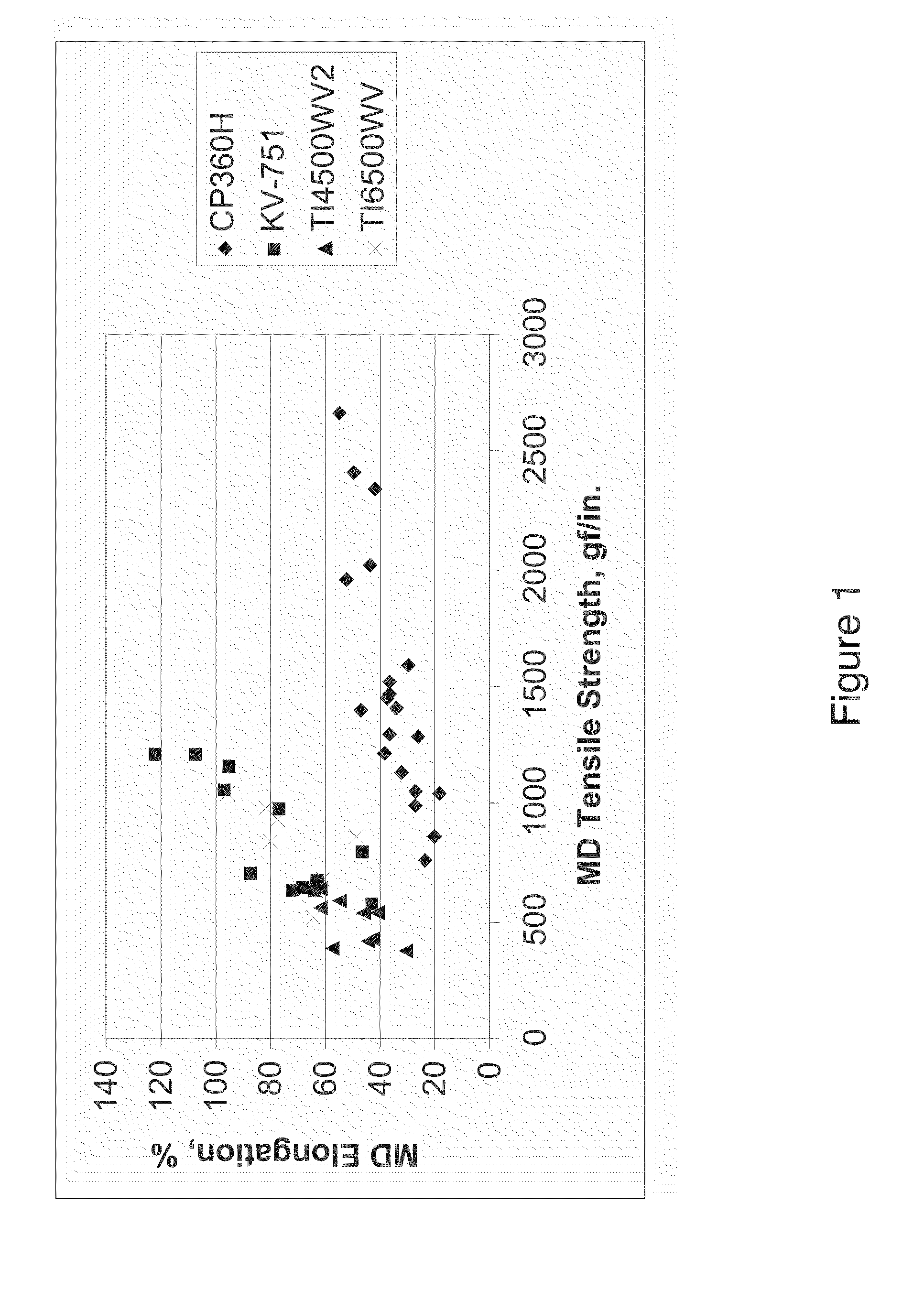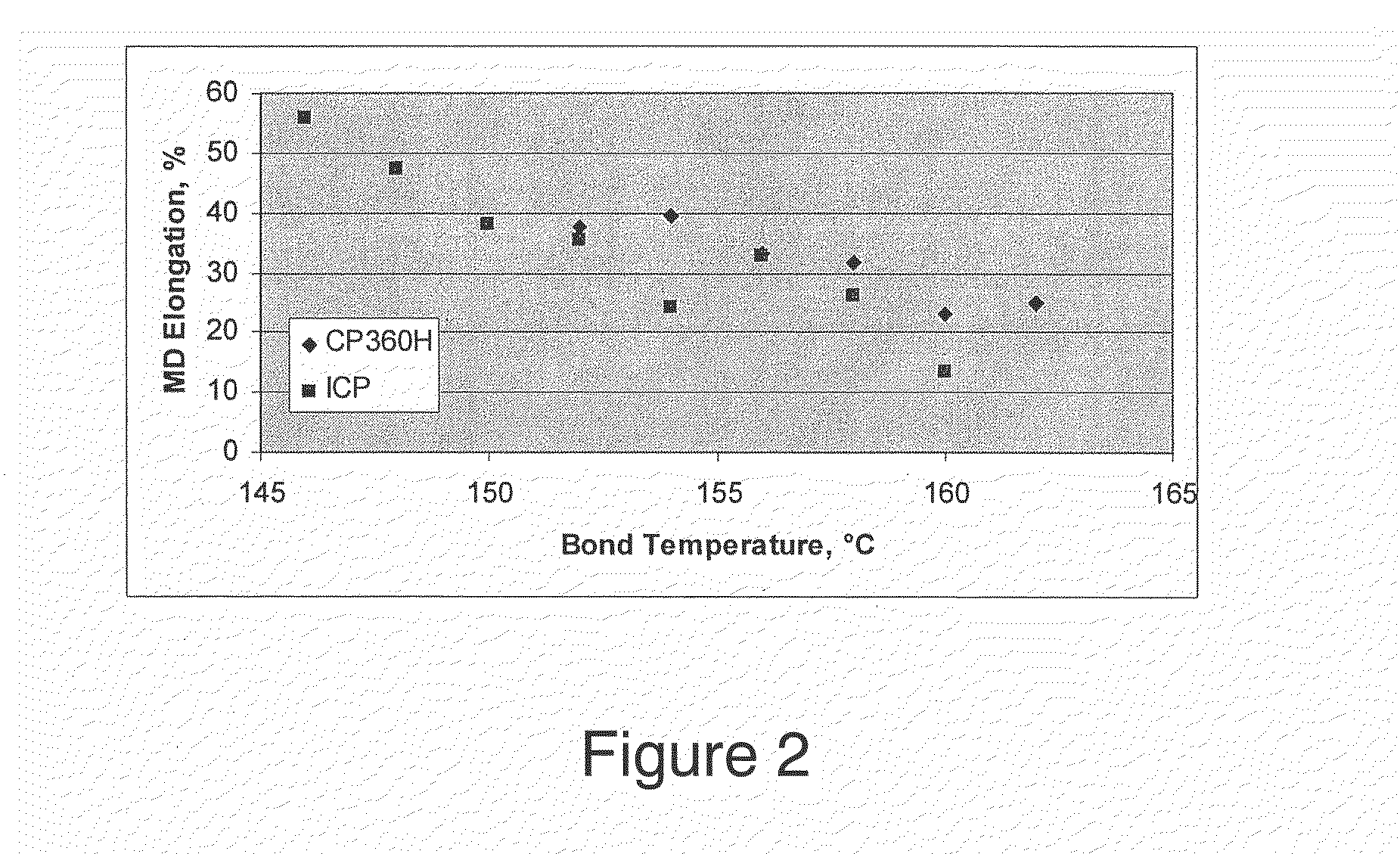Extensible spunbonded non-woven fabrics
- Summary
- Abstract
- Description
- Claims
- Application Information
AI Technical Summary
Benefits of technology
Problems solved by technology
Method used
Image
Examples
examples
[0020]Three commercially available impact copolymers from Sunoco, Inc. (KV-751, TI4500WV2, and TI6500WV ) were processed into spunbond non-woven fabrics on a Reicofil spunbond line, according to the general procedure described above, using a 2,734-hole, 0.6 mm capillary diameter die. The throughput for each polymer was maintained at 107 kg / hr / m. The resulting spunbond non-woven fabrics were maintained at basis weights of 15 grams per square meter (gsm), 18 gsm, or 25 gsm. A fourth sample, compounded from TI5150M-type powder, also from Sunoco, was likewise prepared into a spunbond non-woven and tested.
[0021]Fabric samples obtained from the commercial polymers were tested according to ASTM D5035 for tensile strength and elongation in the machine direction (MD) and cross-machine direction. The cross-machine direction may be referred to as the “transverse direction” or “TD.” The machine direction is defined as the direction the forming belt on which the sunbonded fiber mat is deposited ...
PUM
| Property | Measurement | Unit |
|---|---|---|
| Fraction | aaaaa | aaaaa |
| Fraction | aaaaa | aaaaa |
| Fraction | aaaaa | aaaaa |
Abstract
Description
Claims
Application Information
 Login to View More
Login to View More - R&D
- Intellectual Property
- Life Sciences
- Materials
- Tech Scout
- Unparalleled Data Quality
- Higher Quality Content
- 60% Fewer Hallucinations
Browse by: Latest US Patents, China's latest patents, Technical Efficacy Thesaurus, Application Domain, Technology Topic, Popular Technical Reports.
© 2025 PatSnap. All rights reserved.Legal|Privacy policy|Modern Slavery Act Transparency Statement|Sitemap|About US| Contact US: help@patsnap.com


